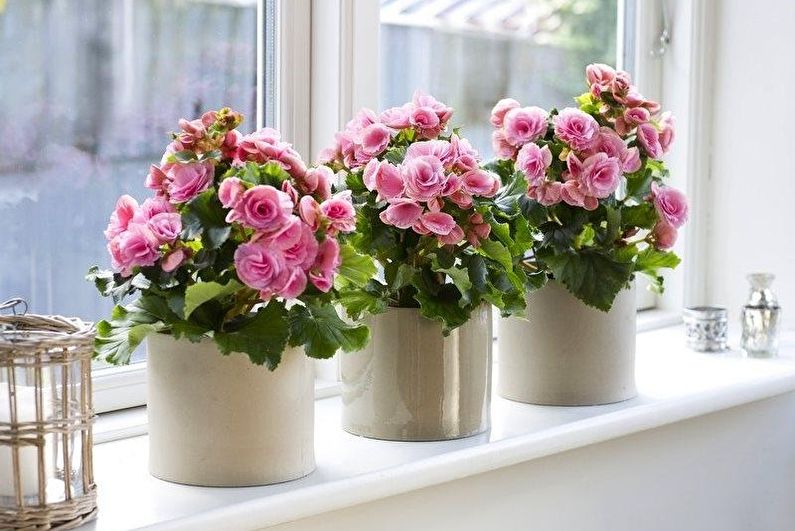
Begonia without excessive modesty can be called the most striking decoration of residential neighborhoods. Balconies and window sills framed by lush pink, yellow, orange, white inflorescences instantly attract the attention of passers-by. Most varieties of this cute home flower retain a colorful look all year round, imperceptibly updating their tropical palette. This is not surprising, because the homeland of begonia is the sunny Caribbean, from where it was brought back to Europe by French botanist Charles Plumier in 1687. The flower received its name in honor of the organizer of the expedition, Michel Begon, who was then the governor of the island of Haiti.
The main types of begonia
In nature, there are more than 1600 plant species that belong to the Begoniaceae family. Among them there are grassy flowers, vines, shrubs, as well as epiphytes growing from the bark of trees. At the same time, in decorative gardening, there are about 120 basic varieties of begonia and over a thousand hybrid.
Depending on external features, all of them are conditionally subdivided into tuber, bush, ampelous (drooping) and bindweed. Begonias with an unusual color of leaves and unprepossessing flowers appearing once a year are decorative-deciduous, the rest belong to the group of flowering.
Tuber begonia
This type of begonia combines the presence of a perennial tuber, which does not update from season to season, but increases annually, accumulating more and more nutrients. Due to this root structure, this species boasts a long continuous flowering time (up to 6 months) and excellent decorative properties.
Due to their rich color, splendor, and size, the flowers of tuberous varieties of begonias are often even superior to roses, camellias and dahlias. Particularly attractive are large terry hybrids with watercolor shades or contrasting rims along the edges of the petals.

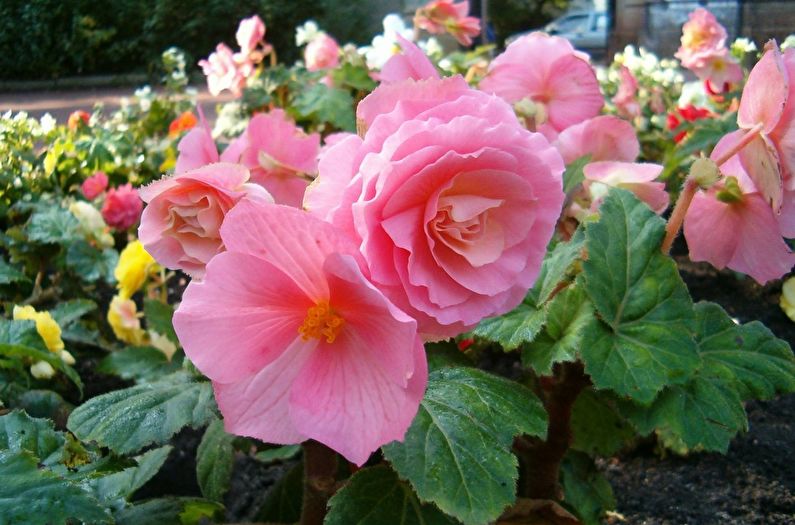
Bush begonia
It has the usual roots of the fibrous type and propagates mainly by seeds or cuttings. Basically, decorative-deciduous varieties belong to this type. Flowers on them rarely appear and look rather modest.
Begonia mini-bushes with asymmetric heart-shaped leaves are usually grown on window sills. At the same time, large bushes, the height of which can reach 2-3 meters, serve as decoration of parks, gardens and flower beds.
Bush begonia leaves are striking in their unique coloration in different shades of green, dark red, brown. There are many varieties with contrasting veins, spots, shell-like curls, a smooth and velvety surface.
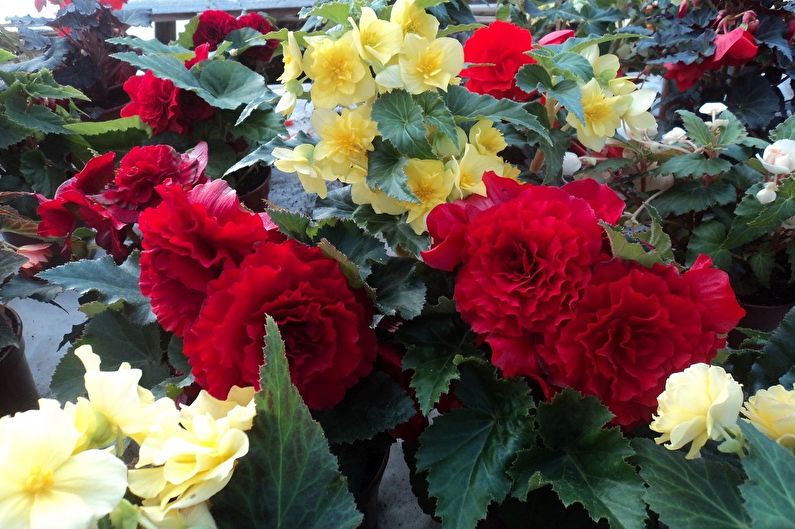
Ampel begonia
These are long-lasting colorful bouquets flowing from hanging planters on open verandas and terraces. Most often they are found among tuberous varieties, and the main distinguishing feature of this group are soft hanging branches with elegant tassels of flowers.
Large types of ampel begonias are perfect for landscape gardening - tall flowerpots, wrought iron stands, gazebos. The main thing is that at noon the flowers should be in the shade of trees or buildings, and also be protected from excess rainwater.
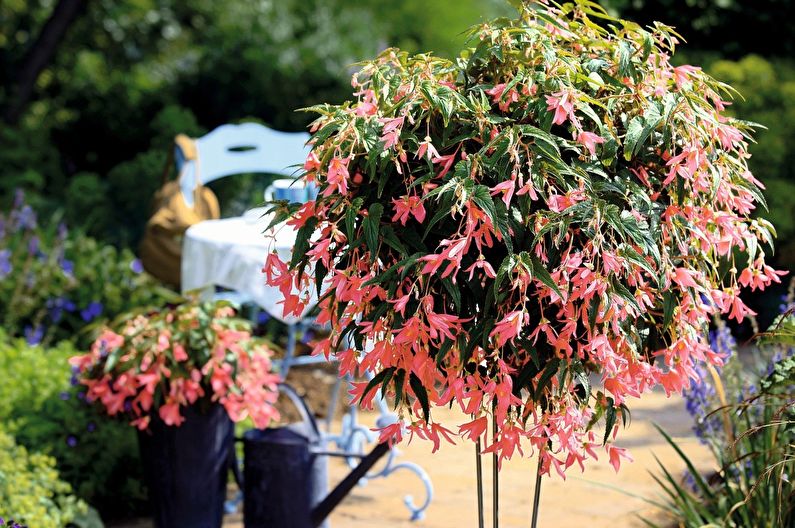
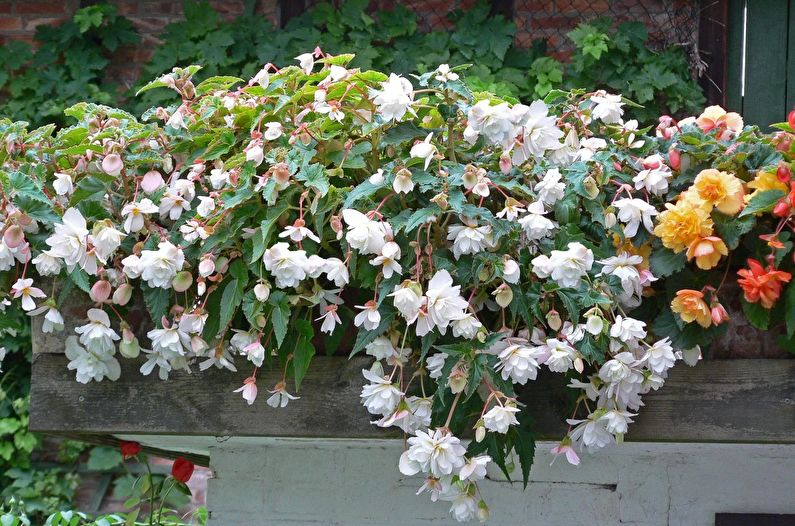
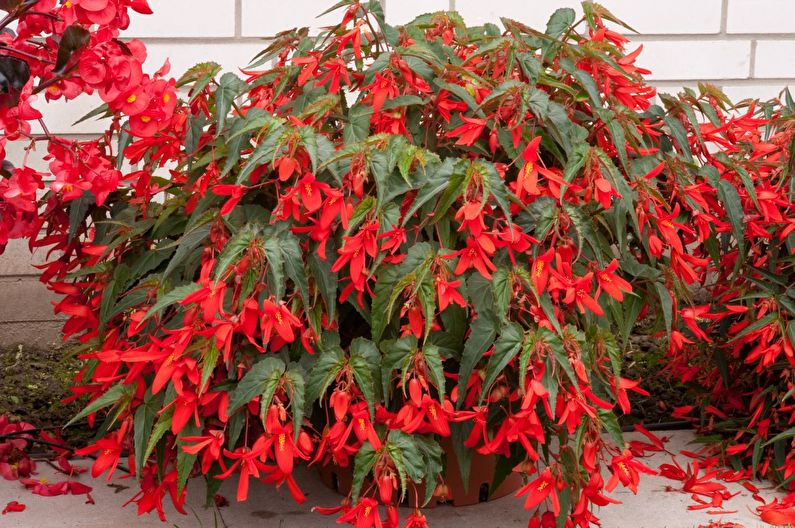
Bindweed begonia
Bindweed begonias as if created for arches, all kinds of openings, ladders and pergolas. Equally successfully as a support you can use nets, fences, fences or balcony grilles. With such landscaping, in one season they will turn into delightful floral walls, delighting the eyes of the owners and guests.
However, like all other varieties, curly begonias respond poorly to direct sunlight, so it is advisable to place them on the northeast and northwest side, or in areas more or less obscured by other plants.
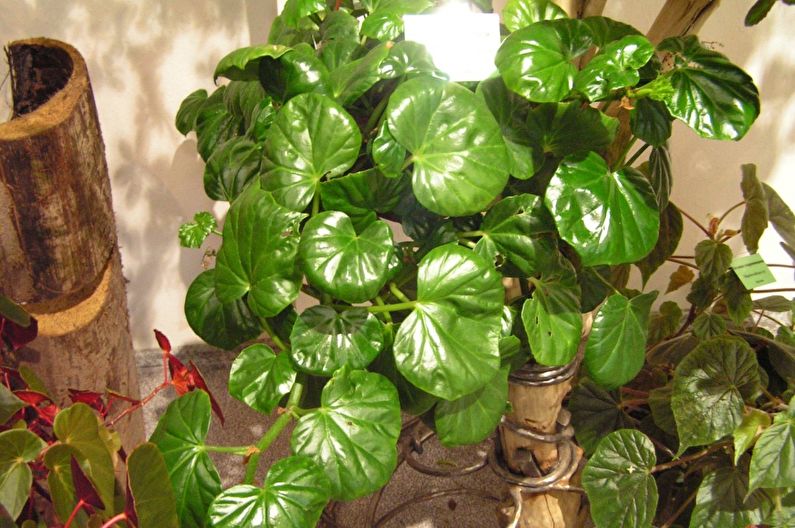
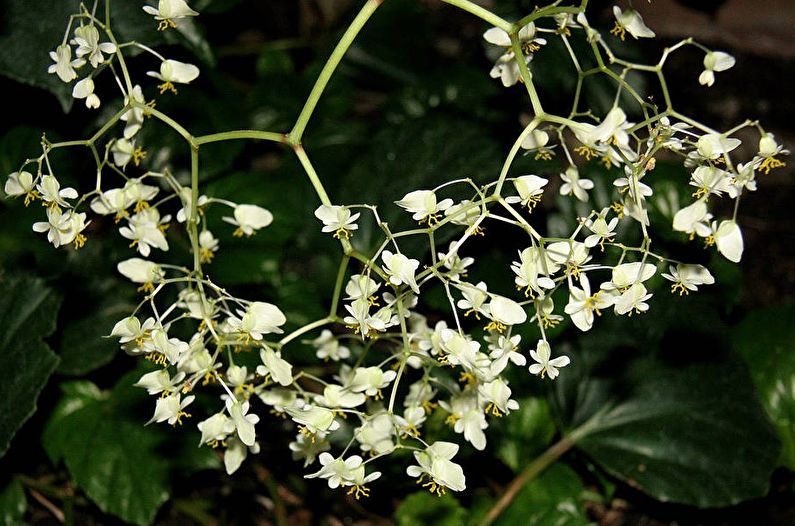
Evergreen begonia
It makes up a special group of flowers that cannot be grown outdoors in temperate continental climates. These are indoor plants, capable of blooming continuously under suitable conditions all year round. The ideal place for them is window sills (with the exception of the southern ones), heated glazed loggias, greenhouses, and greenhouses.
Compared to seasonal, evergreen begonias look simpler - the inflorescences are not so lush, the flowers are small or medium, but they do not have to be dug up for the winter, and planted again every spring.


Proper Begonia Care
Despite the exquisite appearance and exotic origin, begonia is one of the most unpretentious garden and indoor plants. In their natural environment - on tropical islands and oceans - these flowers easily adapt to any conditions, choosing medium-shaded areas with little humidity and a comfortable temperature for existence.
Lighting
The ideal solar mode for begonia is the soft backlight in the morning (from 8 to 11) and in the evening (18-22). More demanding in this aspect are large-leaved species with white, silver, and red shades. With the exception of the hot summer, pots with such bushes can be left on the south side. Flowering varieties are best located in the east, west, northwest or northeast. Under direct rays, the delicate leaves of begonia quickly burn out, especially if there are drops of water on them.
The lack of natural lighting will help to compensate for luminescent phyto lamps, which are useful for switching on from November to February. For begonias of evergreen and deciduous species, an average of 12 hours of daylight hours is suitable.
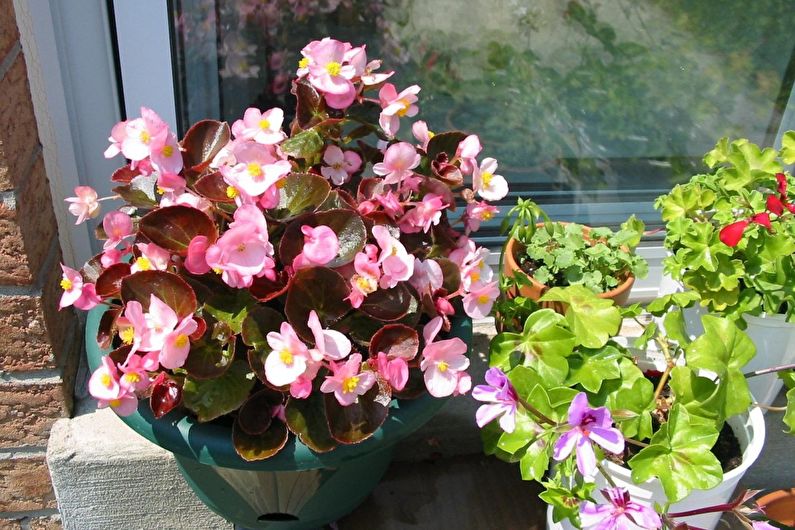
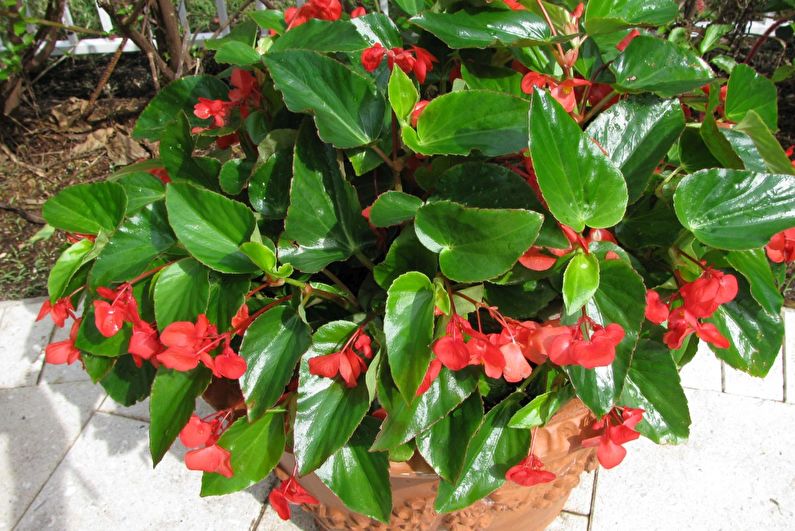
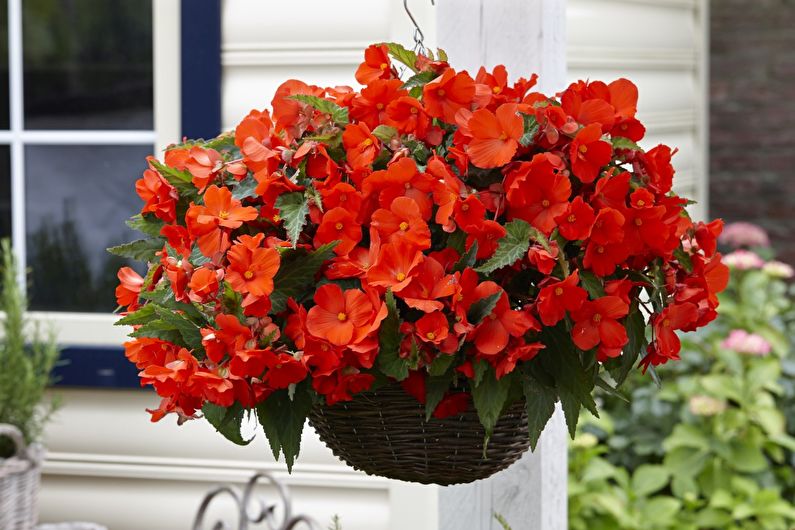
Temperature
The optimum temperature for the growth and flowering of begonias is 18-20 degrees in the summer and 12-15 degrees in the winter. Already at +4 bushes can die, losing not only flowers, but also leaves. Do not allow a strong excess of the temperature norm - this is fraught with drying out of the plant.

Humidity
According to the observation of flower growers, begonia develops best with air humidity in the region of 50%. It is undesirable to put it near heating appliances, batteries, and especially gas stoves and convectors, which, in addition to drying the air, also throw away products of combustion that are harmful to the flower.
You can install an automatic air humidifier near the begonia, or periodically spray water from the spray bottle, trying not to fall on the leaves. A similar procedure is best done in the evening.
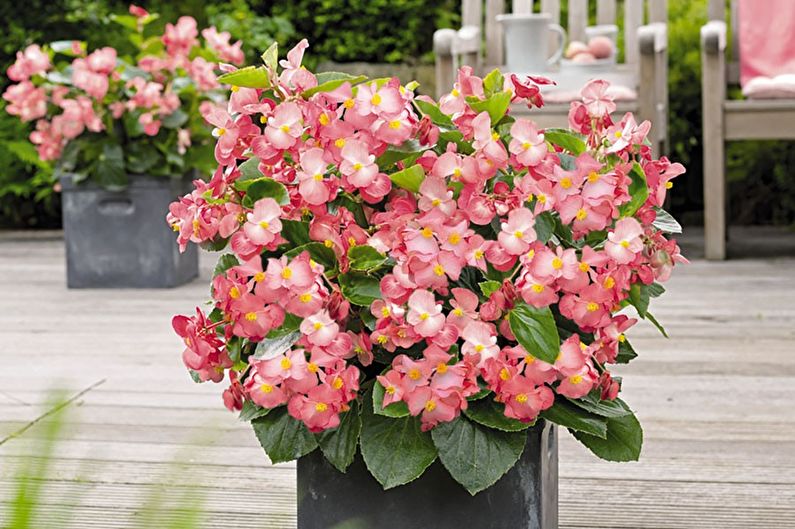
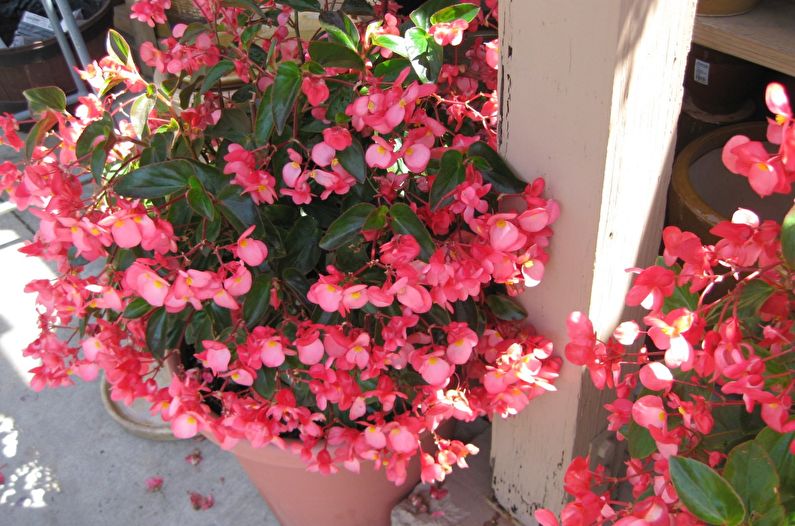
Watering
Most varieties of begonias tolerate short-term drought, but excessive moisture often leads to disease and death of the plant. It is enough to water the tuberous species when the substrate dries to half the depth, and the branched fibrous roots of the bushes require a little more fluid. It is recommended to use water that is settled or filtered, at room temperature, without lime impurities.
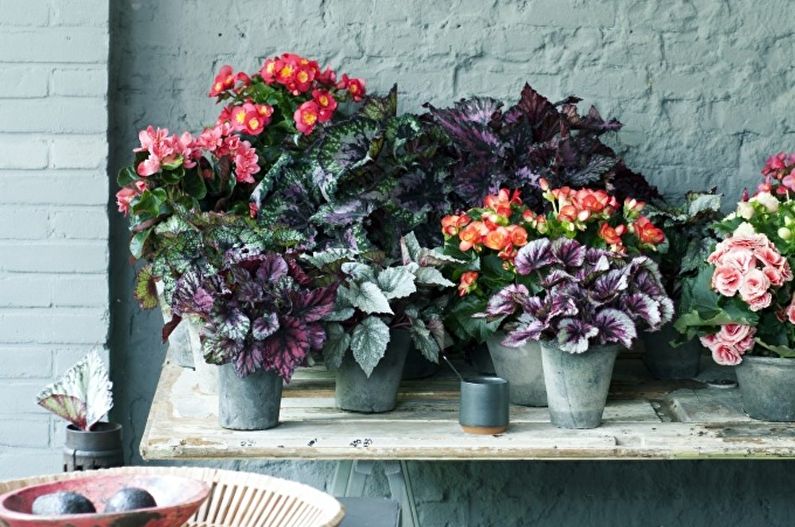

Fertilizers and fertilizing
Feeding begonias with minerals and vitamins should be carried out regularly, with a frequency of once every two weeks from March to October. The rest of the year, the plant is at rest, and this even applies to ever-flowering varieties.
There are many drugs designed specifically for begonias, which you can buy in specialized stores. They contain a water-soluble complex of nutrients that allow the bushes to remain healthy during the period of active growth and flowering.

Pests and Begonia Diseases
Compliance with the basic requirements for the care of begonias is almost guaranteed to protect delicate plants from any problems.The appearance of insects or diseases is, first of all, a symptom of improper content. In most cases, the causes are easy to detect: dry leaves appear when overdried; clear spots cause sunburn; leaf falling is the result of hypothermia; rotting occurs due to stagnation of water, and a lack of minerals is reflected in the decreasing size of new leaves and the decreasing number of flowers.
Powdery spots and plaque on begonia leaves can be caused by powdery mildew or gray mold. These diseases develop with a lack of light, stagnant air and high humidity, and spraying with fungicides, which include the substance benomyl, helps to combat them.
The most dangerous disease of begonia is the appearance of yellow rings on the leaves. They are caused by tomato blotch viruses and cucumber mosaic viruses, against which there are no effective remedies yet. Plants affected in this way are subject to destruction. The same outcome awaits bushes in the roots or leaves of which nematodes are wound - worms ranging in size from 0.5 to 1 mm. Their presence is detected by deformation of the surface, the appearance of growths and swollen spots.
If you leave begonia in adverse conditions, it can be infected by pests - aphids, red spider mites, thrips, scale insects. The easiest way to deal with them is to use insecticides. Indoor plants should be treated on the balcony or near an open window, so as not to poison the air with chemicals. Sometimes folk remedies also help - spraying with a soap solution (20-30 grams of laundry soap per 1 liter of water), infusions of onions, garlic, and tobacco. In order for the treatment procedures to be effective, a proper climate should be provided for begonia in which the listed insects simply cannot exist.
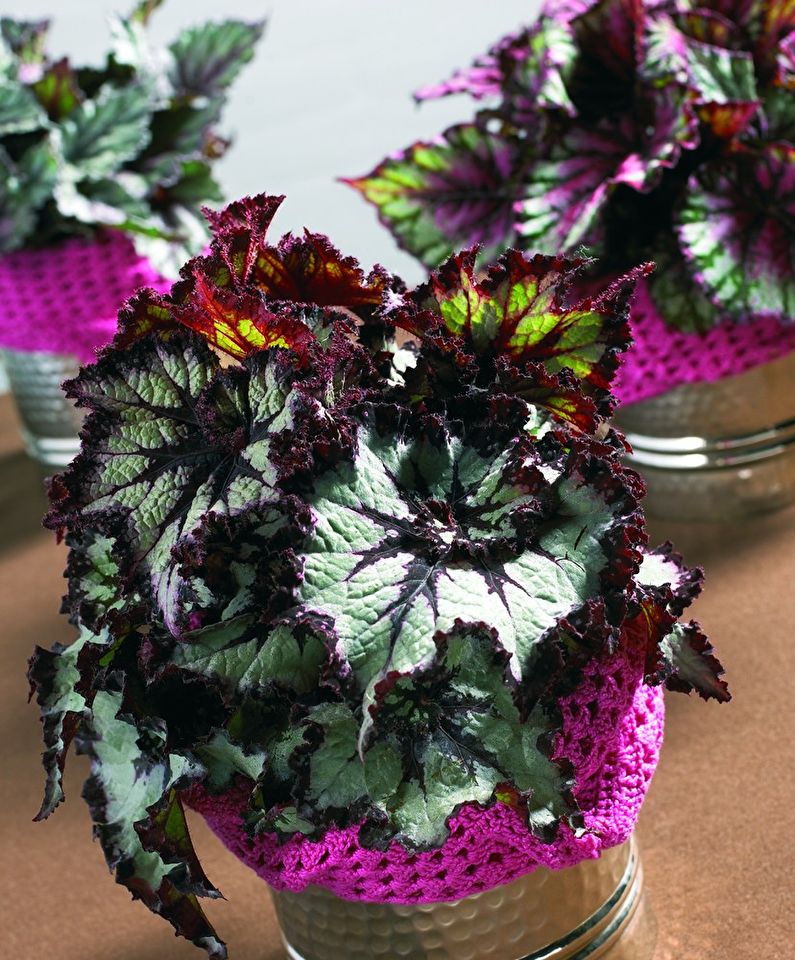
How to transplant begonia?
The capacity for begonia must be selected based on the size of its root system and crown. This plant does not require great depth, so it is better to give preference to low but wide pots, always with one or more drainage holes. A very good option would be the trellised bottom complete with a capacious pallet through which watering can be carried out.
To prepare the substrate, mix sheet soil (50%) with peat and humus (25% each). About a third of the pot is desirable to put drainage - expanded clay, perlite, pebbles with sand. From above you can pour crushed charcoal (up to 3 cm), and then the soil.
In order not to damage the begonia during transplantation, it must be generously watered, and only then carefully removed from the old soil. Then the roots can be washed with a light solution of potassium permanganate, cut, remove rotted areas. For the adaptation period - about one month - the plant needs more frequent watering and protection from the bright sun.

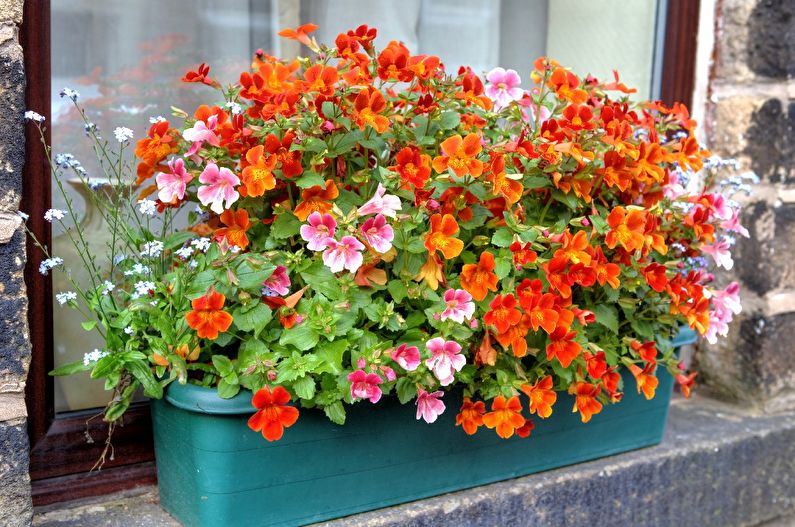
Propagation at home
There are three options for the propagation of begonias - seeds, tubers and cuttings. In general, getting young sprouts at home is not difficult at all, and even an inexperienced grower can cope with this task.
Begonia propagation by seeds
The first method is the most time-consuming and time-consuming. Begonia seeds are very small - 60 grams per 1 gram. Before sowing seedlings, they can be mixed with sand, starch or flour to slightly reduce the concentration.
Suitable time: end of February - beginning of March. Soil - 2 parts of chernozem mixed with 1 part of sand and 1 part of peat. Before emergence, the temperature should be about 16-18 degrees, after - 20-22 degrees. The waiting time depends on the conditions and variety, so that the first sprouts can appear in the period from 5 to 20 days after sowing.
It is best to water begonia seeds with cautious sprinkling with warm water, using a spray bottle. Seedlings should provide bright lighting, good air circulation and humidity of 50-70%.
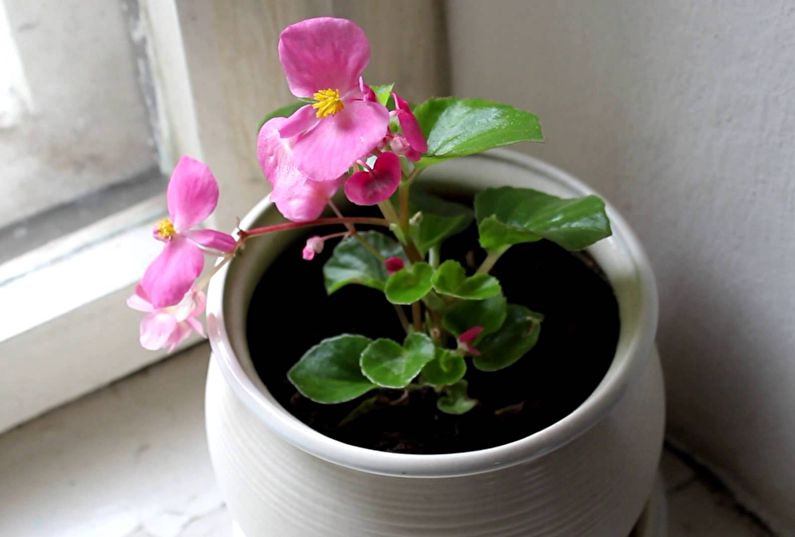
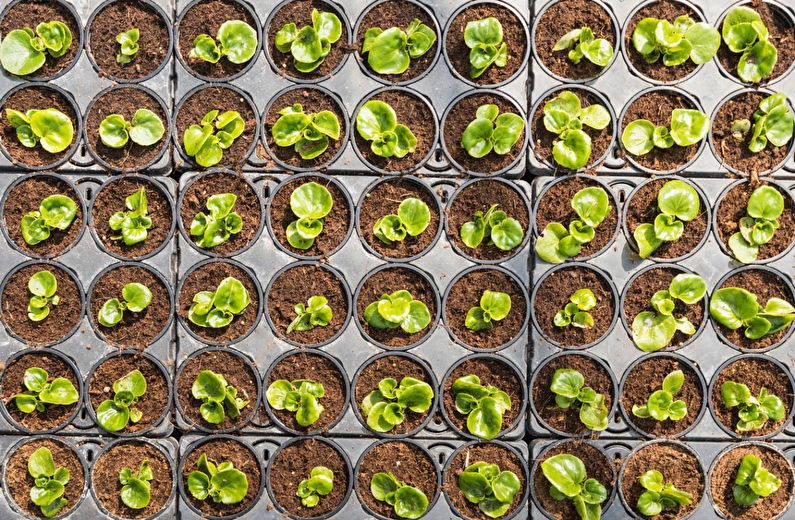
Tuber begonia propagation
Tuberous begonia varieties are usually dug out of the soil for the winter, so you can divide the thickened root in early spring, immediately before planting begins. It is enough to cut it into several parts, making sure that at least a few protruding kidneys remain on each (they look like protruding dense dots or short white sprouts).
During the day, it is advisable to leave the tuber fragments in a cool place so that the cut is pulled over by the crust, and then place each of them in the ground for further cultivation.
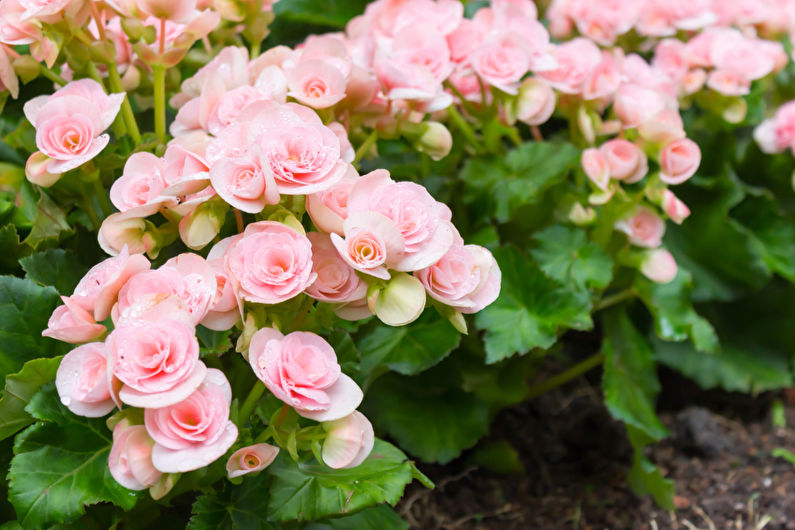
Propagation of begonia by cuttings
Cuttings of begonias are carried out by rooting the stems (less often - leaves) of the mother plant. For successful reproduction, it is necessary to cut off the upper or middle part of the stem 8-12 cm long, on which there must be at least 2-3 buds. Leaves are removed, with the exception of 1-2.
After this, it is necessary to immerse the fragment in soft water at room temperature and leave it in a warm (about 20 degrees), bright place until small roots appear at the cut point.
Then the young begonia is planted in standard soil and at first requires careful care - it must often be watered, not left in the sun, and also fed.
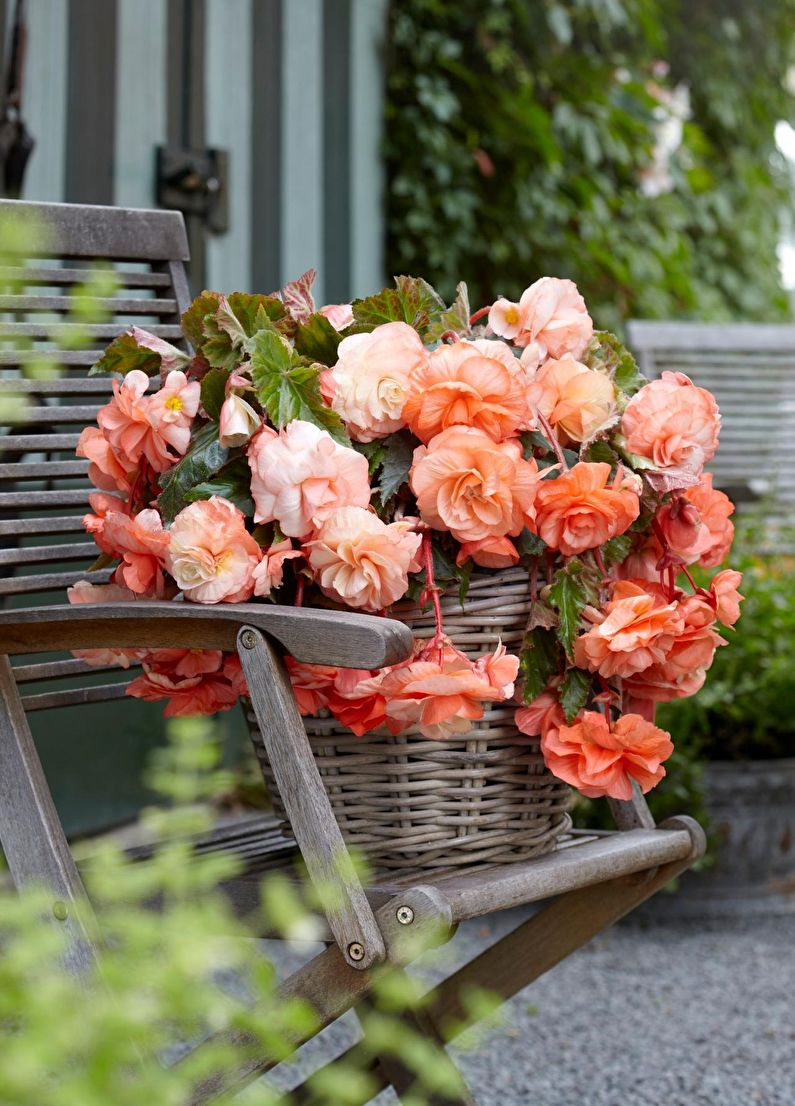
Video: Begonia - Care Tips


